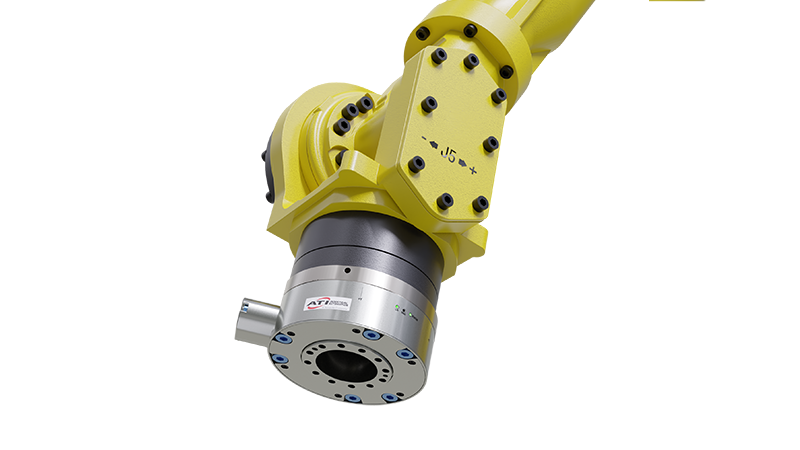Automation has revolutionized the manufacturing industry, providing more efficient and accurate production processes. With technological advancements, automation has evolved from simple repetitive tasks to complex operations that require higher precision. One of the key technologies driving this evolution is 6-axis force sensors.
What are 6-axis Force Sensors?
6-axis force sensors, also known as multi-axis force sensors or six-degree-of-freedom (6-DOF) sensors, are devices that measure forces in all three Cartesian dimensions and torques around each of these axes. These sensors can detect both static and dynamic forces and provide feedback on their magnitude and direction.
Applications in Various Industries
6 axis force sensor have a wide range of applications across various industries due to their precision and versatility. In robotics, they enable robots to adapt to different tasks by sensing and adjusting to the force and torque applied during operation, making them essential for tasks requiring delicacy, such as assembling electronics or handling fragile goods. In the automotive industry, these sensors are used in testing equipment to ensure the safety and quality of components by measuring the stress and strain under different conditions. Additionally, in the healthcare sector, 6-axis force sensors contribute to the development of advanced surgical robots, enhancing the precision and safety of procedures.
Advantages Over Traditional Sensing Methods
One of the primary advantages of 6-axis force sensors is their ability to provide comprehensive force and torque measurements simultaneously. Traditional sensing methods may require multiple sensors to achieve what a single 6-axis sensor can, leading to increased complexity and potential inaccuracies. Furthermore, 6-axis force sensors can significantly reduce setup time and calibration needs, as they can adapt to different tasks and environments quickly. This integration capability makes them more cost-effective and efficient compared to utilizing several specialized sensors.
Future Trends in 6-Axis Force Sensor Technology
The future of 6-axis force sensor technology is promising, with ongoing advancements aimed at improving their sensitivity, durability, and ease of integration. Researchers are exploring the use of new materials and manufacturing techniques to create sensors that are more resistant to environmental factors, such as temperature fluctuations and vibrations, which can affect accuracy. Additionally, there is a focus on developing smarter sensors with built-in processing capabilities, enabling them to provide more insightful data analytics and decision-making support for automation systems. With these improvements, 6-axis force sensors are poised to play an even greater role in the next generation of automated manufacturing and robotic applications.
How do 6-Axis Force Sensors Work?
6-axis force sensors use a combination of strain gauges and microelectromechanical systems (MEMS) technology to measure forces and torques. Strain gauges are used to detect the deformations caused by applied forces, while MEMS technology converts these deformations into electrical signals.
These sensors typically consist of multiple layers; a stiff outer layer that protects the sensor and a flexible inner layer that contains the strain gauges. When a force is applied to the sensor, the flexible layer bends, causing changes in resistance in the strain gauges. This change in resistance is then converted into electrical signals, which are processed by a microcontroller or computer to determine the magnitude and direction of the force.
Applications of 6-Axis Force Sensors
6-axis force sensors have a wide range of applications in various industries, including automotive, aerospace, medical, and robotics. They are primarily used for tasks that require precise force control and feedback, such as assembly, quality control, and material testing.
In the automotive industry, 6-axis force sensors are used to measure the forces exerted during vehicle crash tests. In medical devices, these sensors are used to measure the forces applied during surgical procedures. They are also commonly used in robotic arms and grippers to provide real-time feedback on grasping and manipulation tasks.
Advantages of 6-Axis Force Sensors
The use of 6-axis force sensors has several advantages, including:
- High precision: These sensors can accurately measure forces in all three dimensions and torques, providing precise feedback for control purposes.
- Compact size: 6-axis force sensors are typically small in size, making them suitable for use in tight spaces or on smaller robotic arms.
- Cost-effective: With advancements in technology, these sensors have become more affordable and accessible to various industries.
Future of 6-Axis Force Sensors
As technology continues to advance, 6-axis force sensors are expected to play an even more significant role in automation. With the rise of collaborative robots and human-robot interaction, these sensors will be crucial in ensuring safe and precise interactions between humans and machines.
Moreover, advancements in wireless technology have made it possible for 6-axis force sensors to be integrated into wearable devices, providing real-time feedback for athletes and physical therapy patients.
Conclusion
6 axis force sensor have revolutionized automation, providing precise and accurate force control and feedback. With their compact size, cost-effectiveness, and wide range of applications, these sensors are expected to continue driving advancements in various industries. As technology continues to evolve, we can expect even more innovative uses for 6-axis force sensors in the future. So, we need to understand this technology and its potential impact on automation. With further research and development, we can look forward to a more efficient, precise, and safe automated future.

